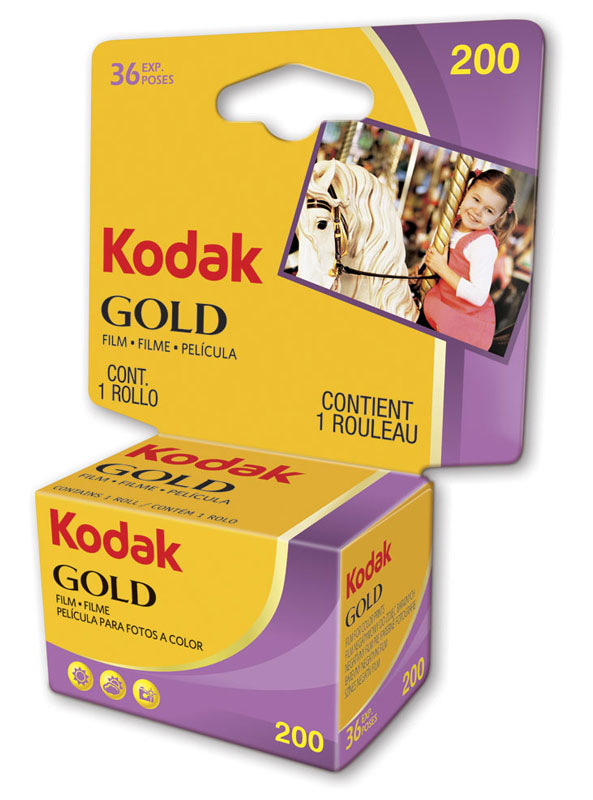Today’s Post by Joe Farace
It’s National Worship of Tools Day but I just merely like my 35mm film cameras. Here’s a look at one of the latest 35mm films that I’ve tested…
 Kodak’s Gold 200 is the company’s consumer-grade, medium-speed, ISO 200/24° daylight-balanced color negative film. The Gold family of films was introduced in 1997, so it’s been around for more than 20 years and is currently in its seventh generation that began in 2007.
Kodak’s Gold 200 is the company’s consumer-grade, medium-speed, ISO 200/24° daylight-balanced color negative film. The Gold family of films was introduced in 1997, so it’s been around for more than 20 years and is currently in its seventh generation that began in 2007.
News Flash: Colorado is not a colorful place in the winter, mostly its just shades of brown and the photographs you see in today’s post that pretty much show what I mean by that statement. Kodak Gold 200 was the first non-expired color film that I’ve shot during my new focus on film photography even though my subjects weren’t all that colorful. Some photographs that I did make of the Jacks & Ball in Parker’s Discovery Park are colorful and I was pleased with the results from that as well as this session.
Subject matter aside, Kodak Gold 200 offers a useful combination of vivid color saturation, fine grain, and image sharpness and seems ideal for daylight shooting. The film has a slight, maybe more than slightly warm bias—it’s called “Gold” for a reason—but I wouldn’t describe this minor color shift objectionable. Rather I would term it “pleasant.” As far as grain is concerned. the film’s grain stricture appears more like “relatively fine” to my eyes. Gold 200 lacks the complete grainlessness I’ve experienced in the original version of FujiFilm’s Acros 100 black and white film but what grain appears only enhances the “film look” of the images, rather than distracting from it. (I don’t know about the latest version of Acros II 100 because I still have some expired stock to shoot before springing for the new stuff.) Kodak says that the film is well suited for enlarging or scanning and based on the 2048 x 3072 scans that I received from The Darkroom I haven’t seen better scans from them for any of the previous black and white or color film that I’ve sent the lab.
 Kodak claims that Gold 200 is an “affordable color negative film” and I paid $7.99 for a 36-exposure roll at Mike’s Camera in September. That price seems to have gone up recently, which seems to be a trend these days with Kodak and Fuji film stock. As I write this, 36 exposure rolls are selling on B&H’s website for $10.99 with 24 exposure rolls for $8.99. Amazon is selling 36-exposure rolls for $17.98 each; that can’t be right, can it? The best deal seems to be three-roll packs, when you can find them, at $29.95 for 36-expsure rolls (at B&H) so you can save a few bucks.
Kodak claims that Gold 200 is an “affordable color negative film” and I paid $7.99 for a 36-exposure roll at Mike’s Camera in September. That price seems to have gone up recently, which seems to be a trend these days with Kodak and Fuji film stock. As I write this, 36 exposure rolls are selling on B&H’s website for $10.99 with 24 exposure rolls for $8.99. Amazon is selling 36-exposure rolls for $17.98 each; that can’t be right, can it? The best deal seems to be three-roll packs, when you can find them, at $29.95 for 36-expsure rolls (at B&H) so you can save a few bucks.
The film appears to have less exposure latitude than Kodak’s Ultramax 400 (review coming soon on that film) or Colorplus 200. When compared with those two, Gold 200 seems to have—depending on lighting conditions— less contrast with more subtle color and a surprising tonal range for a consumer grade film. If you’re interested, the film can be easily pushed two stops to ISO 800, and pulled three stops to ISO 25 and still produce saturated prints and scans. If you’re not familiar with these terms check the text box at the bottom of this post.
I shot a roll of fresh (Expires 10/23) Kodak Gold 200 in my Canon AL-1 with 50mm f/3.5 macro lens during a recent photo walk with Mary. I sent the film to The Darkroom for processing and scanning on February 20 and right away ran into President’s Day causing an immediate delay. But I received an email acknowledging receipt of the film on February 25 and was notified that the scans were available for viewing and download on February 28 and the film was being shipped back to me on the same day. Impressive turnaround.

If you would like to send me a roll of film to review or any other stuff that could be used for these posts and my videos you can mail it to: Joe Farace, PO BOX 2081, PARKER, CO 80134